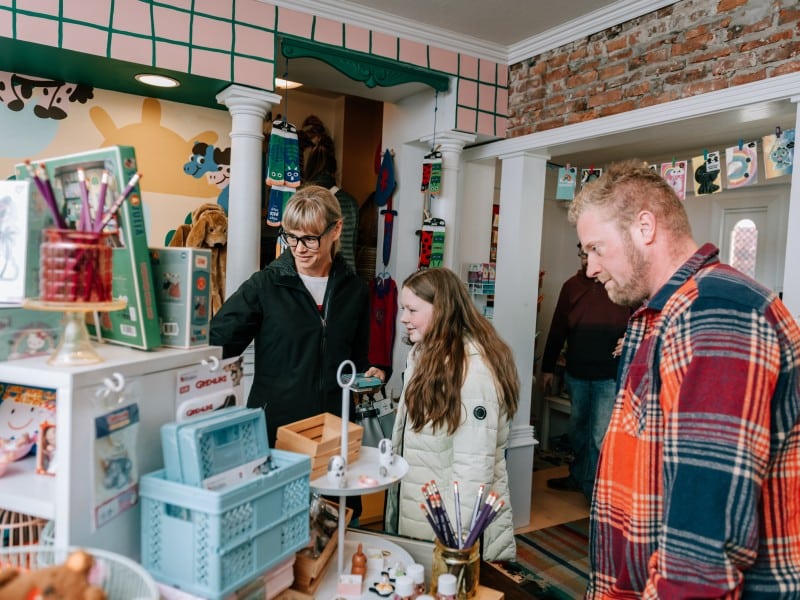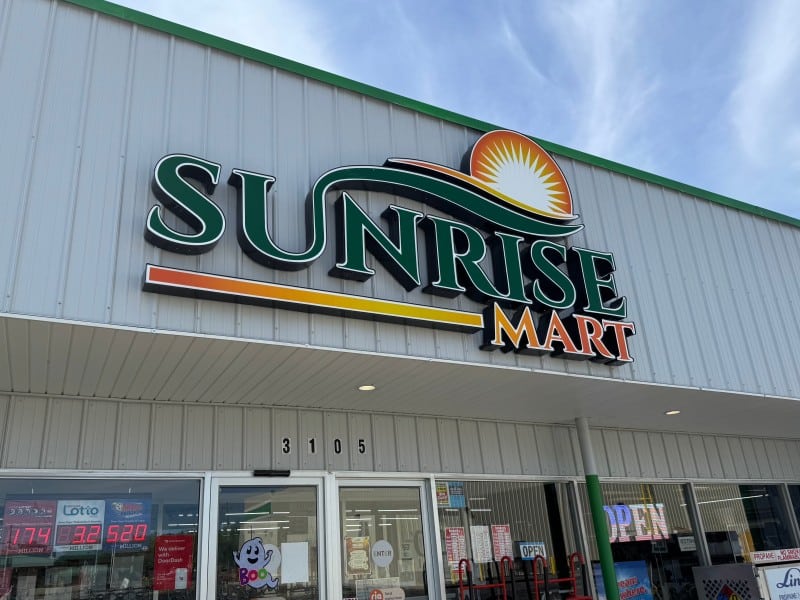Camel milk is trending, and there’s a farm producing it in northeast Indiana
River Jordan Camel Dairy in Kosciusko County uses camel milk to create lotions, soaps, and more.
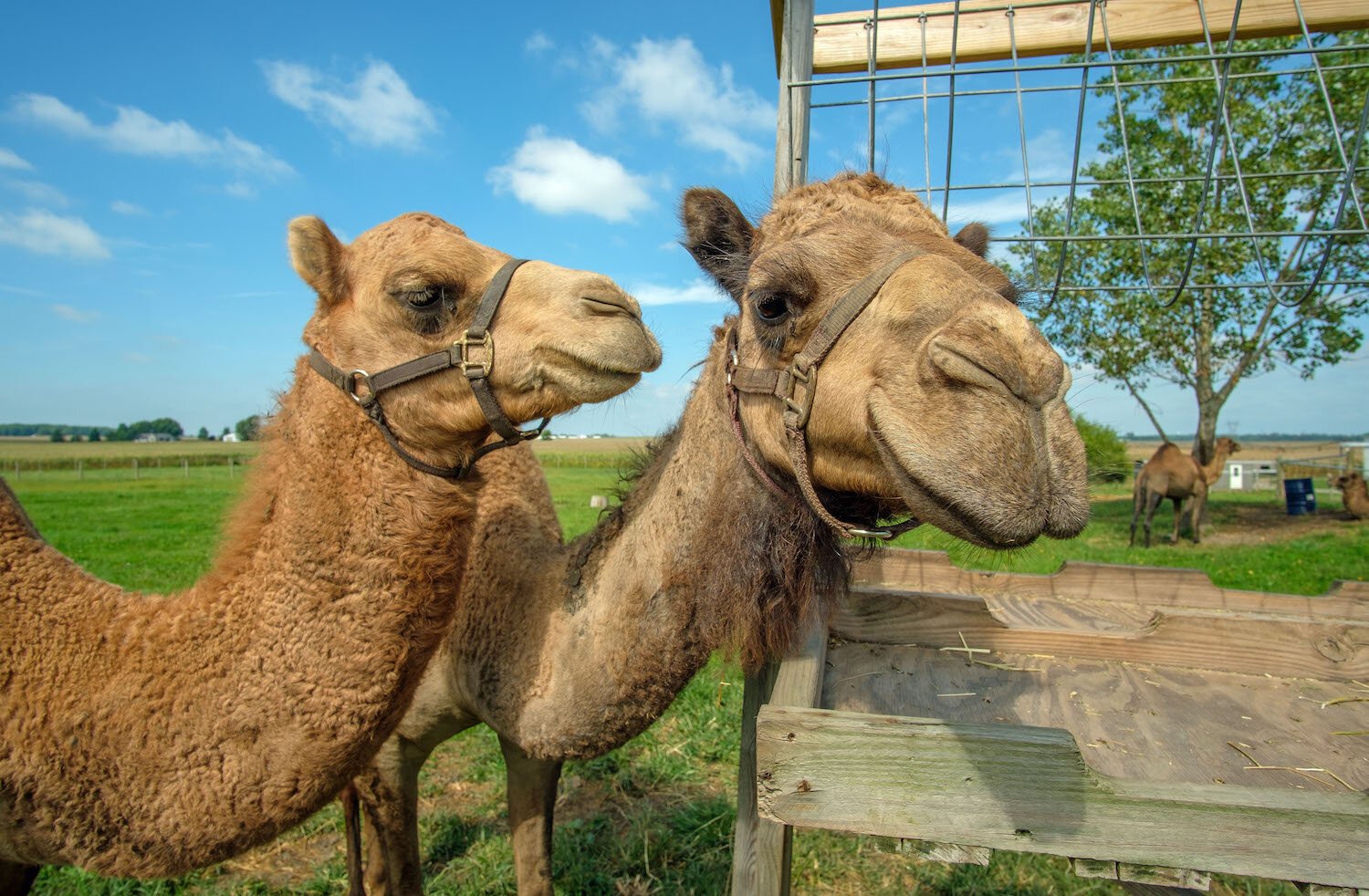
Driving through rural northern Indiana, it doesn’t take long to notice an abundance of traditional farm animals—horses, cows, pigs, sheep, poultry. Now, thanks to Luke and Amber Blakeslee, a new species has joined the local farm scene: Camels.
Luke and Amber, along with daughter Priya, 4, and son Lance, 3, own and operate River Jordan Camel Dairy outside of Milford, Ind., in Kosciusko County.
When the Blakeslees began considering a hobby farm, they knew they wanted something unique, yet productive. They considered a variety of traditional animals, including sheep and goats, but nothing seemed to fit.
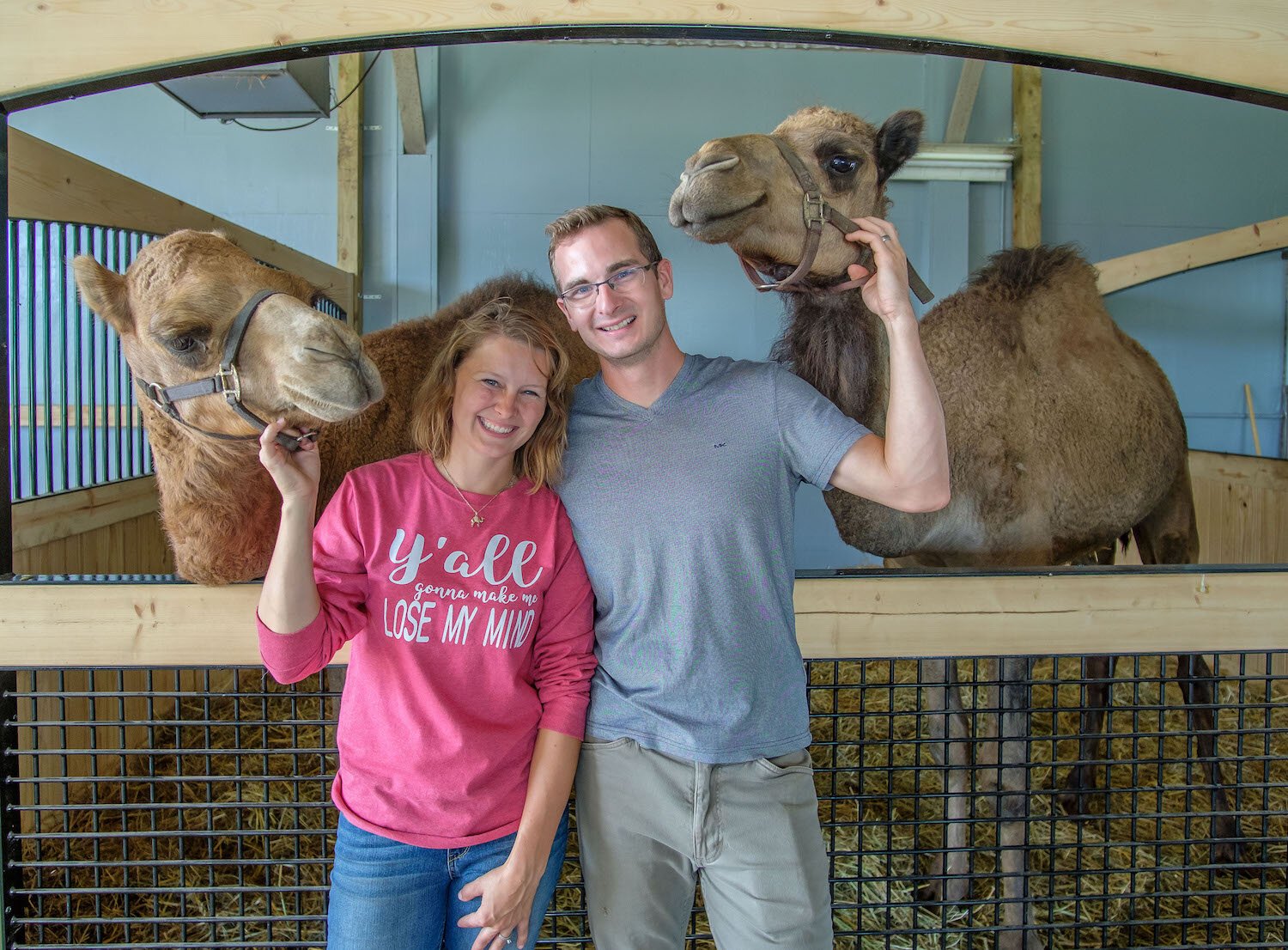
Then, the couple was taken for a ride—a camel ride, that is, and they were instantly hooked. They knew camels would make a unique addition to the local area as animals not commonly found in the pastures of Indiana.
“There are a lot of different ways to have a hobby farm, and we went with the camels because they give us so much versatility,” Luke says. “Our main thought is being able to spend time with family and the kids and have them grow up on a farm. It allows us to fulfill a niche that not very many other people are filling.”
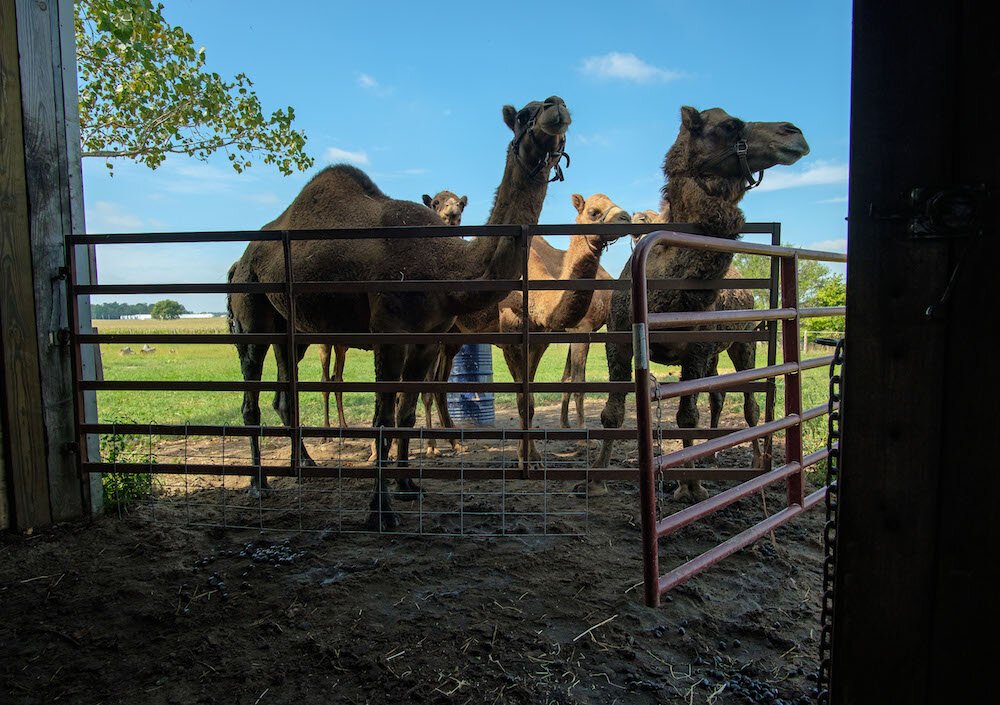
There are few precedents for camel dairy farms in Indiana. However, the Blakeslees are not alone in their new venture. Before they established River Jordan Camel Dairy in 2015, they consulted another camel dairy in Shipshewana where they made several visits to learn firsthand.
They also visited traditional dairy farms and even attended camel conferences to gain as much knowledge as they could.
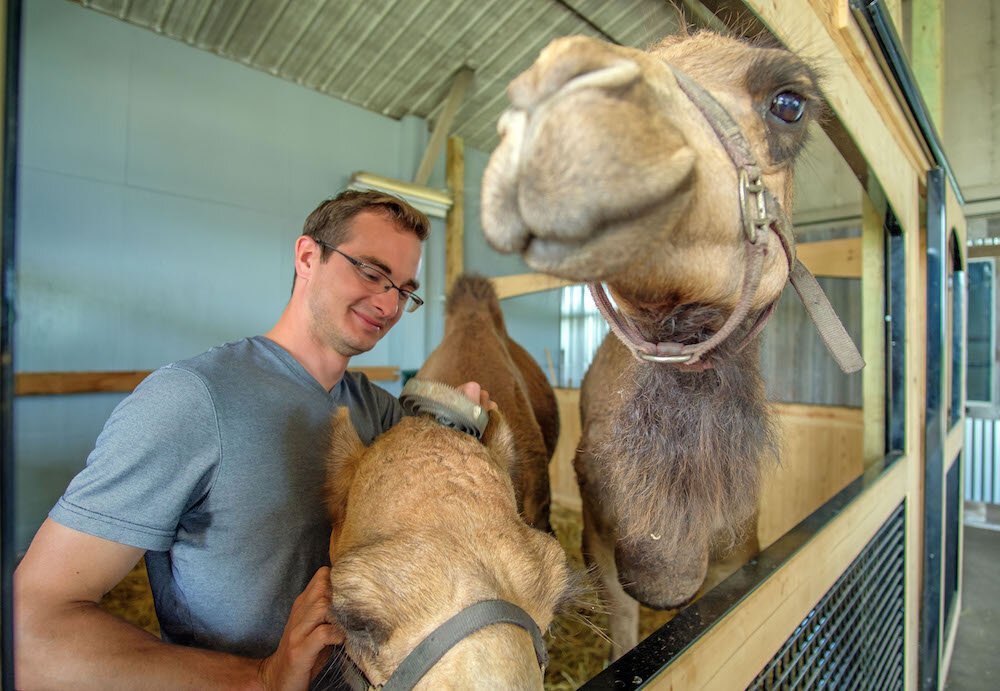
After two years of learning and preparation, the Blakeslees were ready to strike out on their own. They purchased two of their camels, Daisy and Ginger, from the dairy in Shipshewana and began building their herd.
The Blakeslees decided to name their farm River Jordan Camel Dairy after the Jordan River, referenced in the both the Old and New Testaments of the Bible.
“River Jordan is known as a healing river,” Amber says, adding that this name is in keeping with health benefits found in camel milk.

According to Amber, camel milk contains ten times the iron of cow milk, three times the vitamin C, and has properties that are anti-inflammatory, anti-bacterial, anti-viral and anti-fungal. Like goat milk, it is low in lactose. From this healthy milk, Amber creates a line of unique soaps and lotions, which she sells in her shop located on the property.
It’s part of a rising trend among consumers in the U.S. and Asia who are favoring non-cow dairy options, and while the cost of camels’ milk may be higher than cow’s milk, the added benefits are worth the price, notes Business Wire.

Along with soaps and lotions, camels’ milk can be used to make fresh milk, flavored milk, laban, cheese, ice cream, yoghurt, milk powder, infant formula, and more. Different types of camels produce different types of milk, too.
River Jordan Camel Dairy currently has four dromedary camels, including Daisy, Ginger, Jericho, and Journey, and one Bactrian-dromedary mix, Desi, Amber explains. Dromedaries have one hump and are native to Arabia, while Bactrians have two humps and come from Mongolia. The Blakeslees chose dromedaries for their higher milk output, though Desi’s Bactrian genes add something special to the mix.
“It’s been really fun with Desi because she’s the hybrid,” Amber says. “She still has the production, but it’s a fattier milk. It’s a lot more creamy, and it’s going to allow for different concepts in our soap making.”
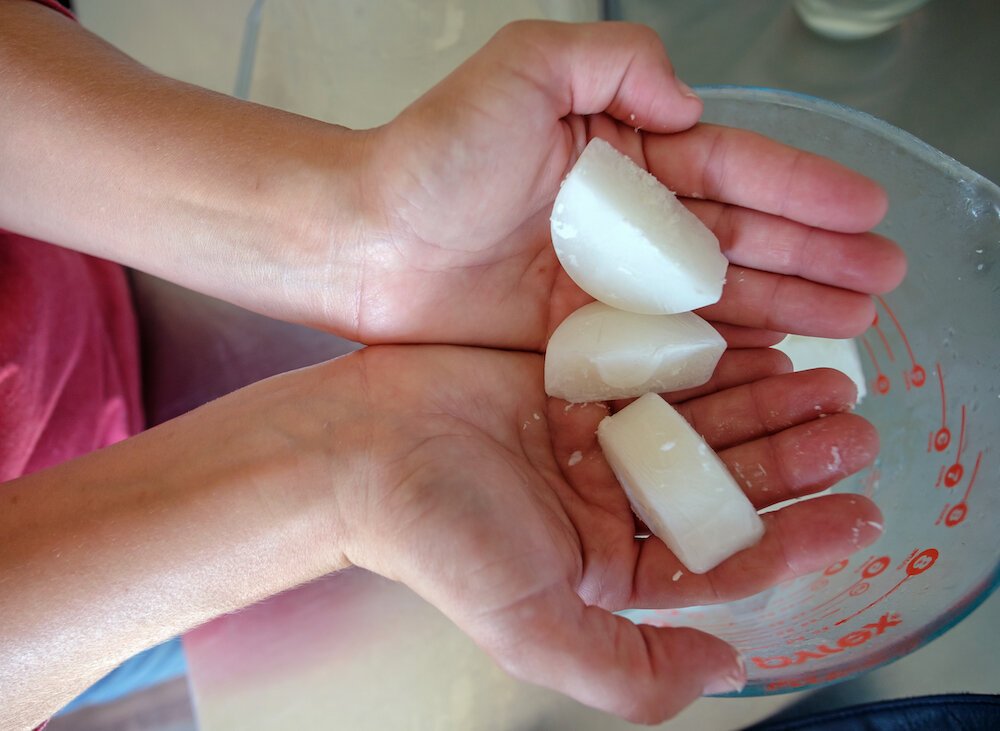
Popular among Amber’s skin products is Aleppo soap, made using a 1,500-year-old recipe from Syria. Aleppo soap is believed to alleviate a variety of skin conditions—a benefit attributed to the camel milk it contains. When the family’s daughter, Priya, developed eczema, Amber formulated her own soap to help relieve the symptoms.
As she experimented with different ingredients, customers began returning for more of her products, bringing stories of relief from symptoms of eczema, psoriasis, dry skin, and more. All of Amber’s soaps are around 25 percent camel milk, which she credits for both the soothing quality of the soap and the thick, rich lather it produces.
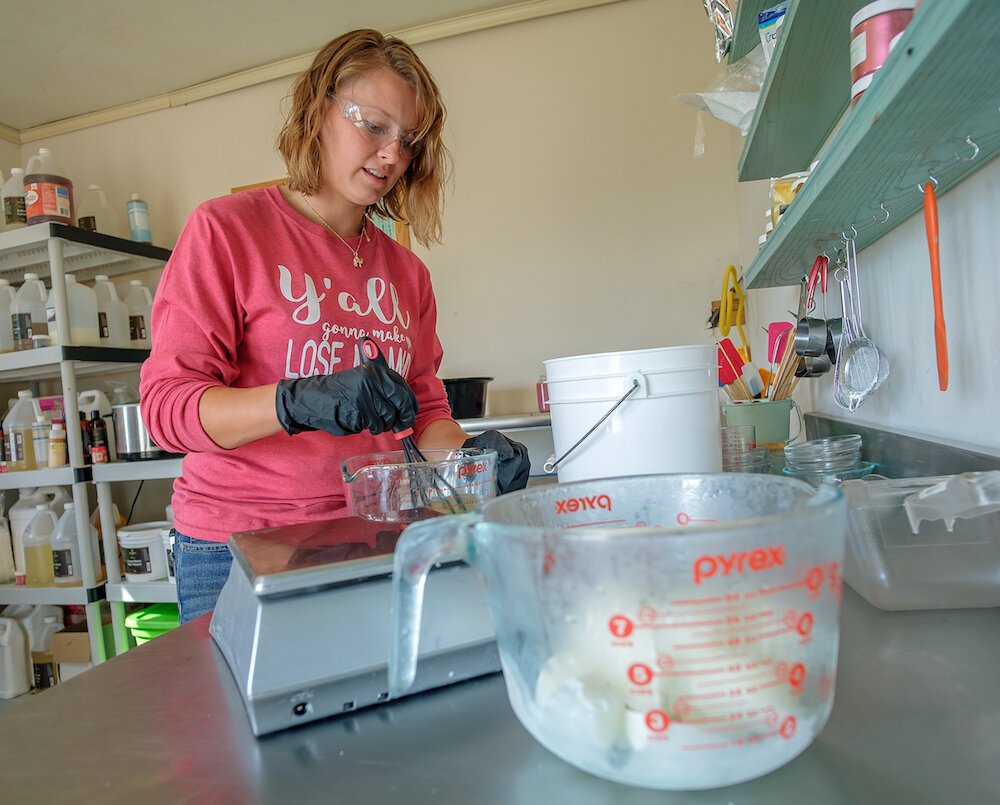
Besides skincare products, the shop at River Jordan Camel dairy carries a limited supply of all-natural yarn spun from the camels’ hair. It also offers camel-themed mugs, T-shirts, throw pillows, and more.
On a given day, visitors will find children Priya and Max in the shop, helping bag items and “write” receipts in their unique way. (Amber, of course, is always willing to write out an “official” receipt.)

Ironically, the one product not currently for sale at River Jordan Camel Dairy is milk. State regulations do not permit the sale of raw, unpasteurized milk. But the Blakeslees note that pasteurization can deplete many of the fats, nutrients, and beneficial microbes found in camels’ milk. So for now, they are content simply to sell milk-based soaps and lotions.

When it comes to size, a typical adult female camel weighs between 1,500 and 1,800 pounds, while a male can reach 2,000 to 2,500 pounds. Given this, one might assume a herd of camels would require a large, spacious pasture for grazing. But this is not the case, according to the Blakeslees, who are able to pasture their herd on just five acres.
“Camels are very efficient in the way they use their nutrition,” Amber notes. “Realistically, we could probably double the size of our herd and still be fine on the land we have.”
“If we had five horses out here, they would eat it down to nothing in no time,” she adds.
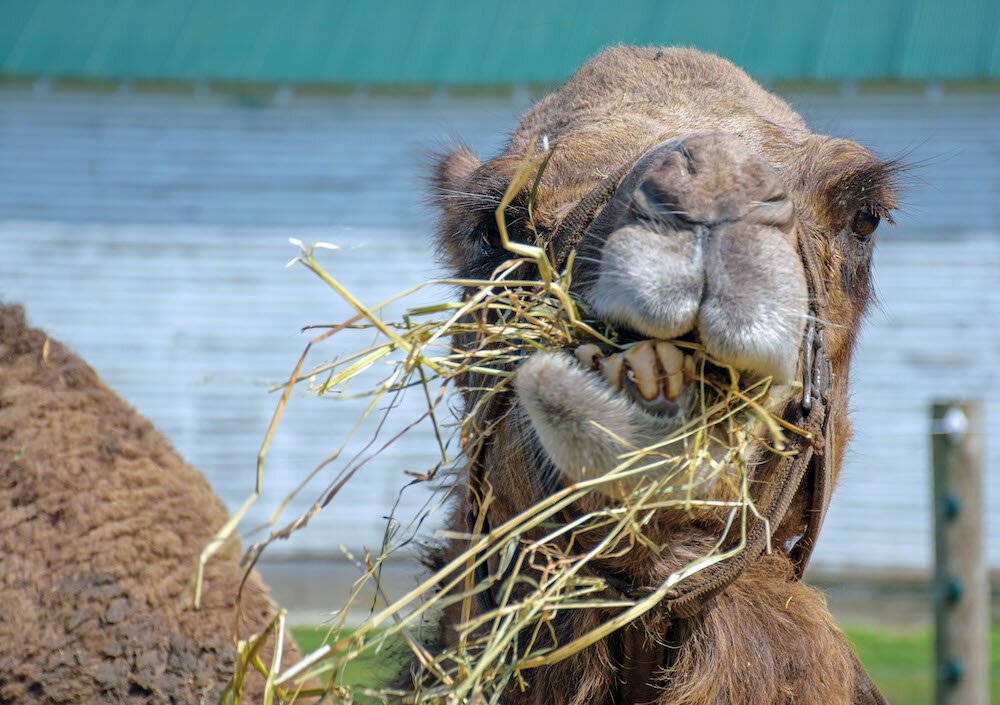
A camel’s diet consists of just about anything, and they will eat things other animals leave behind, including thorns, thistles, and weeds. Interestingly enough, Amber says there are very few plant species in the area that would be toxic to camels. Still, the Blakeslees keep an eye, and they plan to work with the county on planting more of the species that their camels can enjoy.
Another unique aspect of the camels’ diet is that, while they will graze along the ground, they prefer to eat from tree branches. Because of this, the Blakeslees hope to add more trees to their pastureland in the future.
“Because it is a niche, it allows us to have a more sustainable way of life and leave a footprint on our area,” Amber says. “Not a damaging footprint, but a good footprint.”
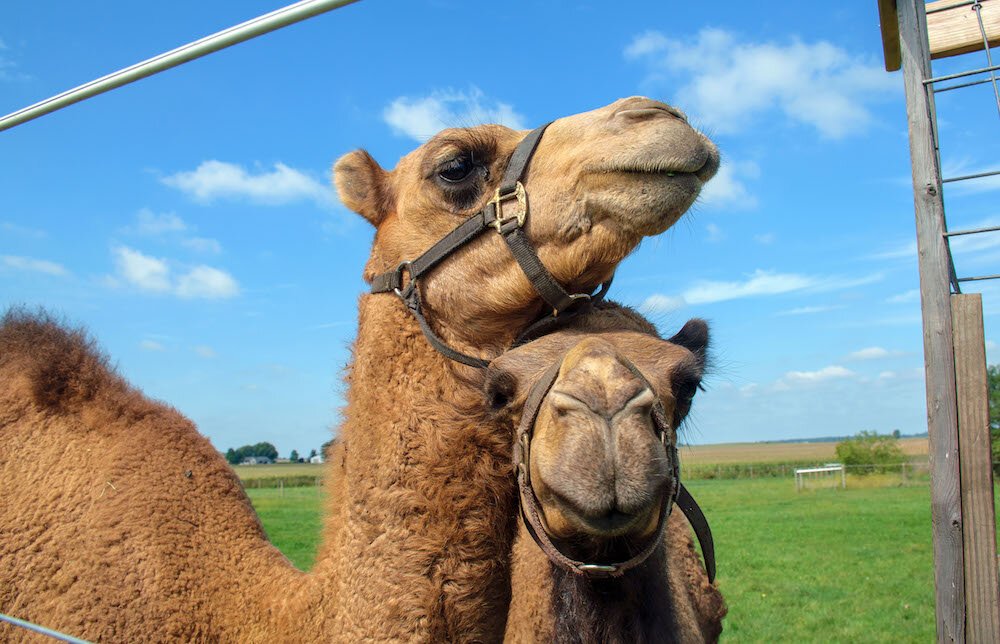
As with cows and horses, camel manure can be composted, which the Blakeslees hope to begin doing soon. Amber compares camel manure in appearance to goat “pellets,” adding that it is drier and easier to break down to make good, all-natural fertilizer.
When it comes to pest control, the Blakeslees do not use chemical repellents or insecticides. Instead, they use a fly predator, which they spread in the pasture in cocoon form. Once hatched, the predator specifically targets fly larvae, preventing flies which, in turn, makes for happier camels.
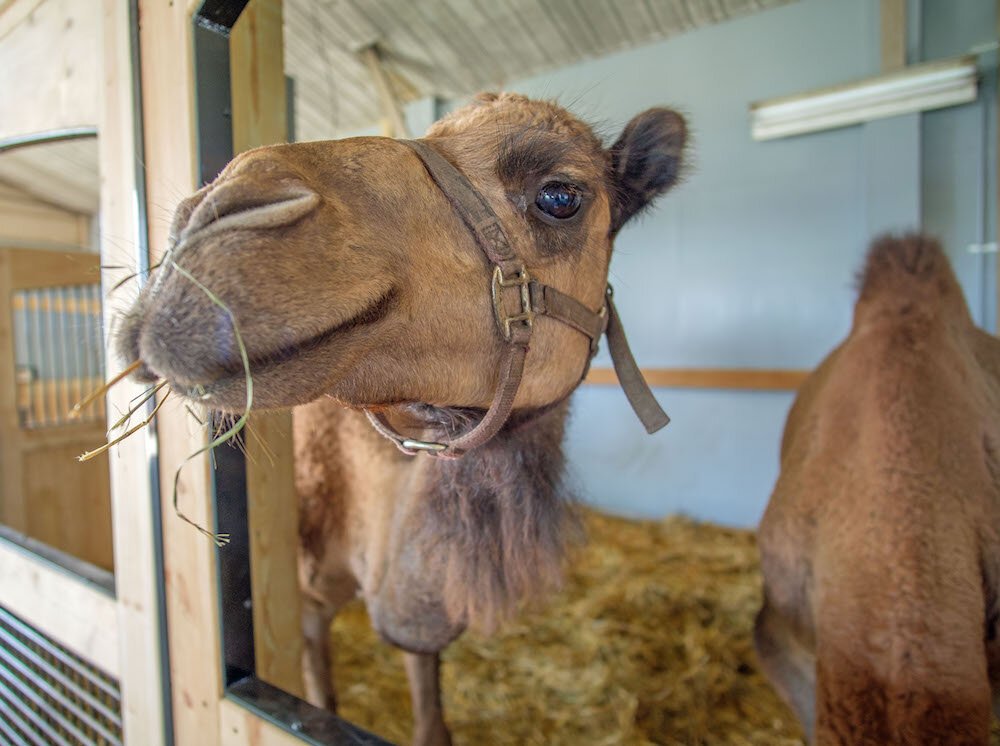
River Jordan Camel Dairy is open for group tours, but reservations are required. The gentle giants love to charm visitors of all ages. School groups, home school tours, and large bus groups have visited from as far away as South Dakota.
“We’ve been a mystery stop, so they don’t always even know they are coming to a camel farm,” Amber says.
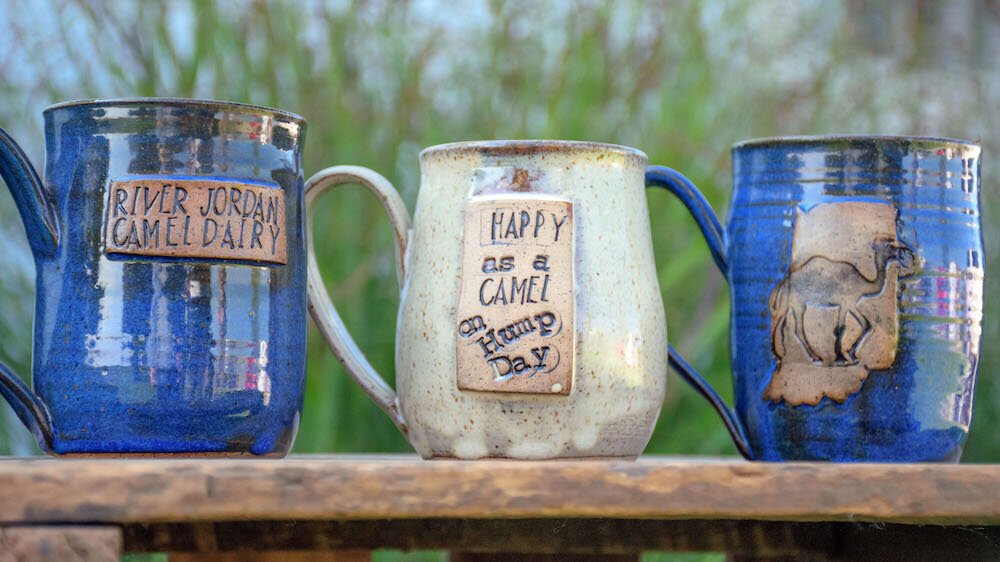
Family Fun Days take place roughly once a month at River Jordan Camel Dairy and have become popular, too. During these events, visitors can get up close and personal with the camels and can feed them their favorite treat—watermelon on a stick. The camels also love to be groomed, and will sometimes become so relaxed they fall asleep, Luke notes.
Luke and Amber hear many misconceptions about camels from visitors.
“There are a lot of myths about camels—that they’re dirty, stinky, they spit,” she says. “The nature of the camel is, they’re curious, gentle, extremely intelligent, and they’re actually very clean.”
Amber tells of a group of visitors who one day came to the barn and who used wheelchairs for mobility.
“The camels leaned their heads down and put them into the people’s laps so they could pet them,” she says.
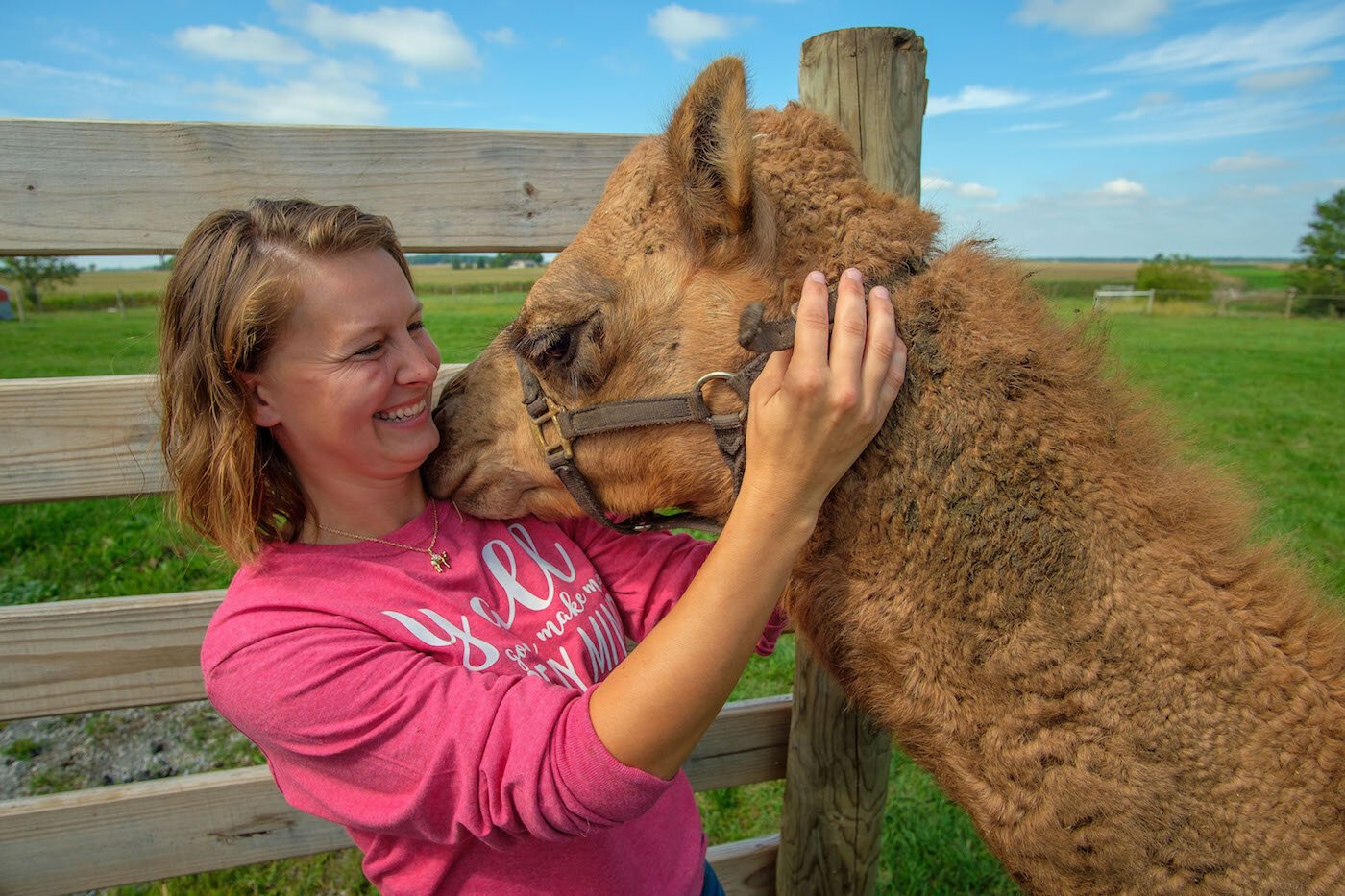
As River Jordan Camel Dairy continues to grow and develop, Luke and Amber are considering what they can add to make guests’ visits even more memorable.
“Down the road, we’d like to do rides and have Jericho pull a cart,” Luke says.
They also hope to have a certified kitchen space so they can begin selling food items, like camel milk ice cream.
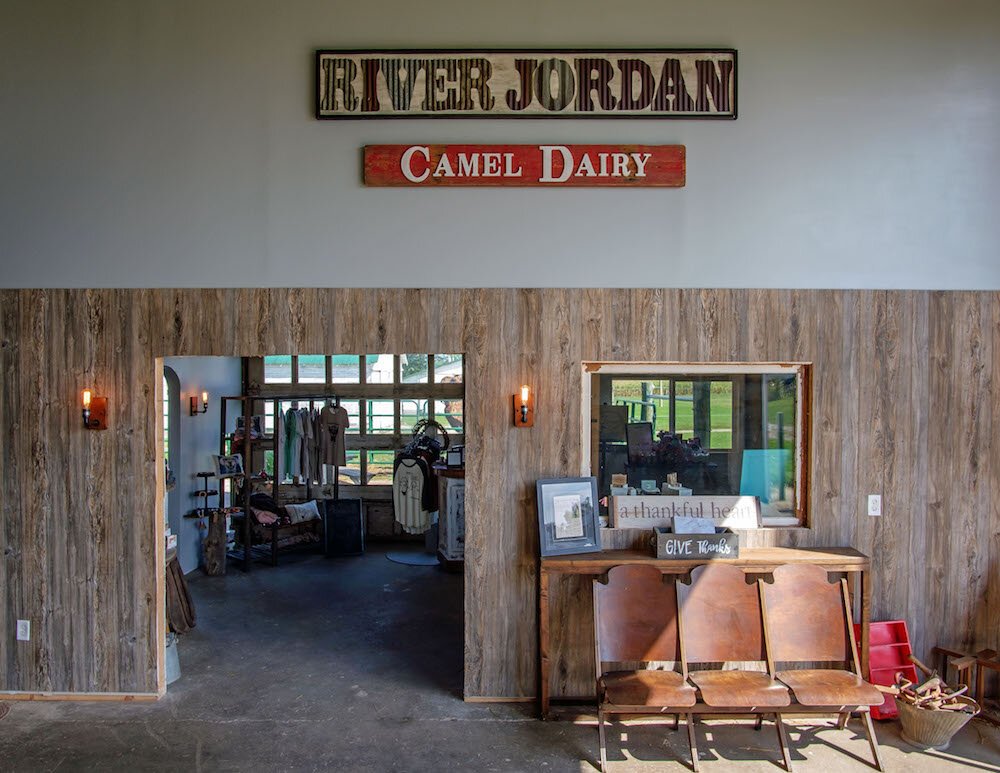
For now, the couple is grateful for how far their venture has come, and they look forward to what the future holds.
“It’s been amazing to see how God has worked through all of this,” Amber says.
Learn more
To learn more about the Blakeslees and River Jordan Camel Dairy, visit www.riverjordancameldairy.com or find them on Facebook.


